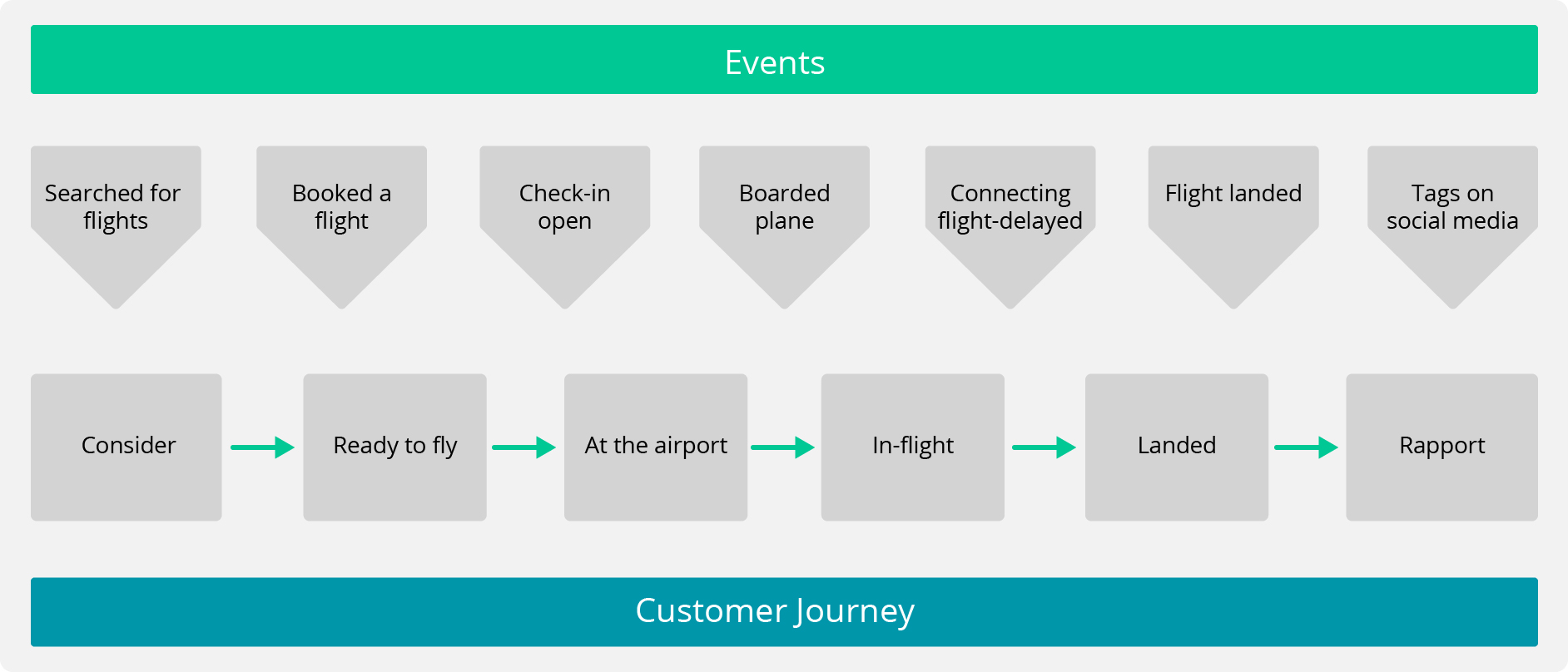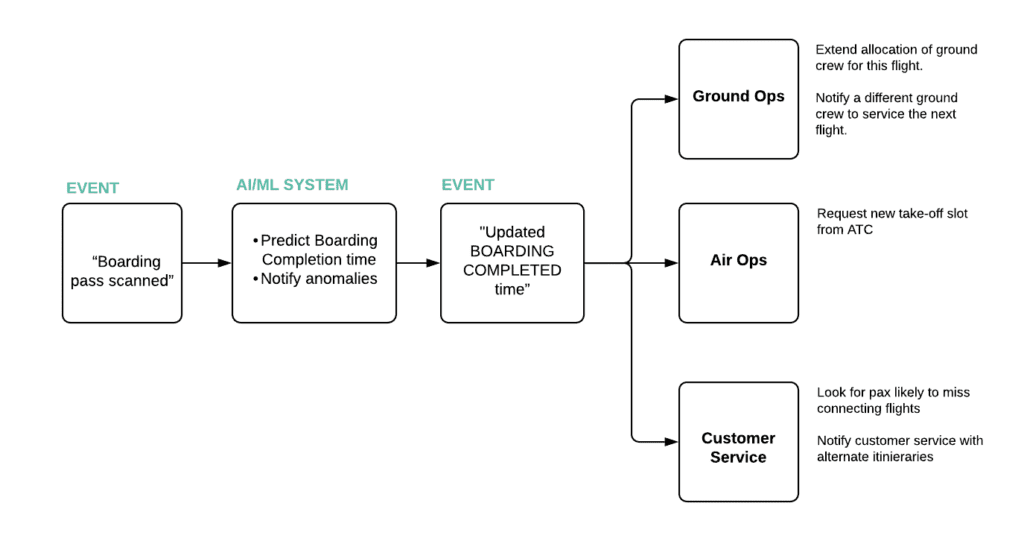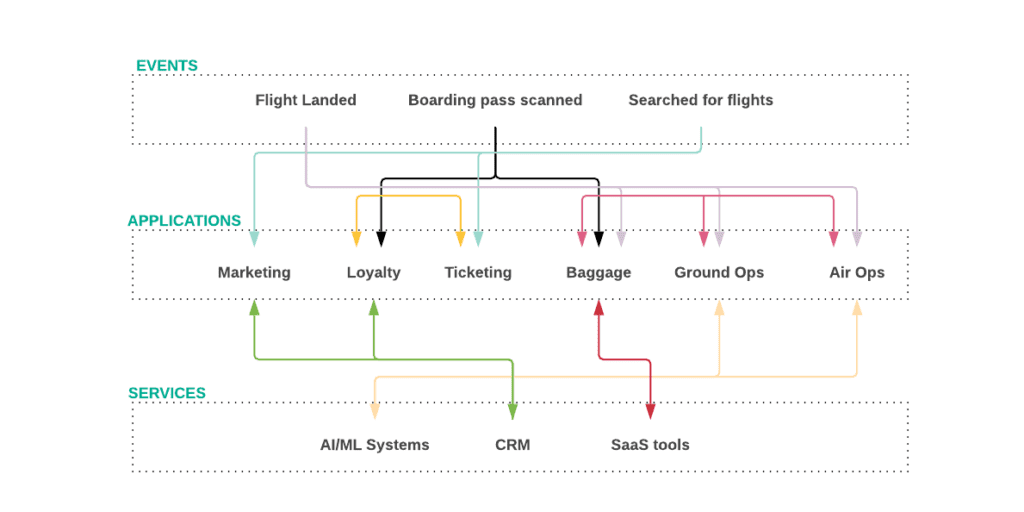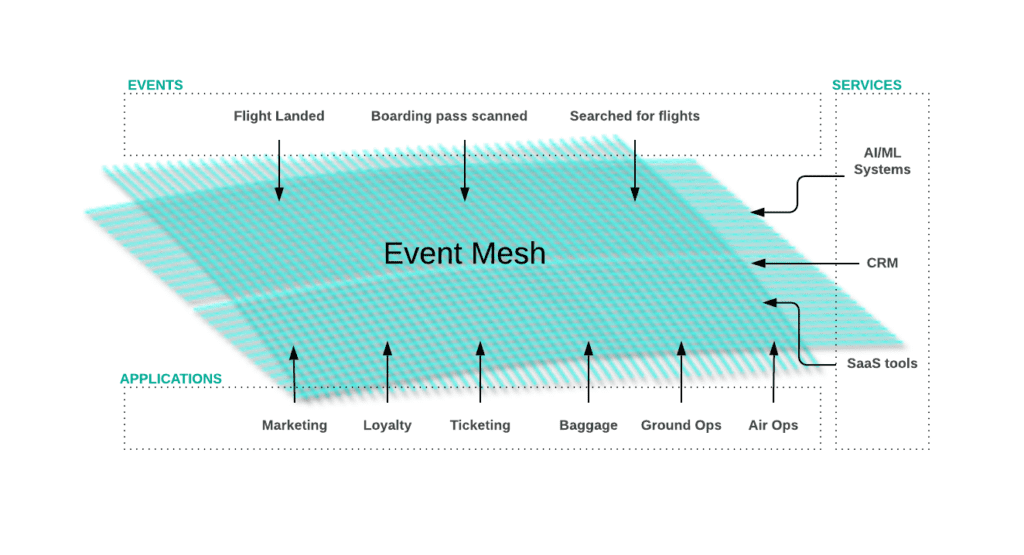The number of people traveling by air continues to climb, but with per-seat margins under pressure, airlines are looking for new ways to grow profitably. That includes offering unique passenger experiences that build loyalty and generate revenue while optimizing operations both on the ground and in the air.
In my conversations with airlines across the globe, I see three critical factors:
- First, the ubiquity of the Internet and mobile phones now defines what a ‘digital’ traveler expects from their airline. They expect things like real-time alerts about flight and gate changes, and instant accrual of loyalty points when they board a flight.
- Second, the cost and importance of efficient ground operations continue to increase. Supported by an optimally sized crew, aircrafts need to turn around faster but still be fully-equipped to serve all passengers.
- Third, there is this notion of “time value of data.” Simply put, airlines believe that the value of an event – like “flight landed” – diminishes over time. Being able to sense, respond to and even predict crucial events can make a big difference in flyer satisfaction and overall operational responsiveness.
Challenges Facing the Airline Industry
IT systems within an airline evolve at a varying pace and in silos. On one side you have digital boarding passes, and on the other loyalty points take 72 hours to show up in your flyer’s account. This incongruence arises due to the difficulty these systems have in sharing information in general – much less in real-time.
Information held by System A needs to be requested by System B. Picture the Baggage application querying the Air Operations application every few minutes to check if a specific flight has landed. This exact information is also crucial for the ground crew. Unsurprisingly, the Ground Operations systems will also need to periodically query the Air Operations system for the exact same information – has that flight landed yet?
This kind of bespoke information sharing architecture is inflexible, cannot scale, and is very expensive to maintain. The resulting silos inhibit the scale at which systems can discover and respond to key events in the airline ecosystem.
Advantages of Event Enabling Your Airline
If key events are available to multiple systems, across teams, right when they occur, the opportunity to respond to them is much higher and can unlock immense value. Think of this as a ripple that is triggered by an important business event.
Let’s take the example of a boarding pass scanned at the boarding gate. This event – boarding pass scanned – is not tied to any one system. It occurs and is now available to all systems at the same time. Applications that need to respond to it can make use of it, and others don’t consume it.
This creates new possibilities for customer experience and operational efficiencies. Let’s look at one series of actions more closely:
The occurrence of one event – “Updated BOARDING COMPLETED time” – triggers three systems to respond and help the airline:
- Make take-off time more predictable and save valuable aviation fuel and ATC fees.
- Cut support call volume and line-ups on customer service desks for connecting passengers.
- Eliminate a domino effect of one flight impacting the on-time performance for the rest of the roster.
Airlines are Destined to be Event-Driven
Over the years, airlines have gathered an immense amount of data on customer needs and preferences, as well as on air and ground operations. Kudos to the airlines for building out procedures and infrastructure to collect and store all this information. However, what we most commonly hear from airlines is “I can tell you in detail what happened yesterday, but I don’t know what is happening right now. Even if I know what’s happening now, I can’t respond to it in real-time.” Sound familiar?
Let’s go back to the “Updated BOARDING COMPLETED time” event. As Customer Service works on alternative itineraries, how do they know which customers to prioritize? Is there a 1 Million Mile passenger on-board? Is there a family of four that booked their rental car and hotel through your airline? Can you notify these passengers – directly or through the flight crew – that you are on it and delight them in the process?
It’s evident here that this request will touch a multitude of systems – Customer Service, Ticketing, Loyalty, mobile apps. Some events like “high-value client” could be generated months before the event “Updated BOARDING COMPLETED time”, but by being able to get that information in motion and liberated from a specific system, the overall responsiveness of the system is enhanced and silos are broken down.
Let’s look at some common interactions between an airline’s systems:
The data flow here is tightly-coupled, point-to-point, and systems are not able to share key information more broadly or in real-time without changing the source systems or polling more systems. Point to point integrations are inflexible and just don’t scale for real-time responsiveness.
What’s needed is a method to bring all events to a common plane and – in a governed way – let systems choose which events and information streams are essential for them. This is embodied in what Gartner calls an event mesh.
An event mesh makes it possible to dynamically stream the same event in real-time to multiple systems in different locations – on prem, in a public or private cloud, or in a hybrid scenario. The event mesh can filter the stream so each system only receives what’s useful to them, e.g., “boarding pass scanned” is essential to Air Ops for predictive analytics but is likely not a valuable event for Marketing.
Enable Your Airline’s Event Mesh with PubSub+
That common refrain from airlines about knowing what happened yesterday or even a decade ago, but not about what’s happening right now, sums up the challenges with systems that live in silos.
An event mesh powered and governed by Solace PubSub+ Platform not only guarantees the delivery of data to the interested consumer apps, but lets you integrate legacy and “bursty” batch-based systems with modern event-driven systems. You can put static data into motion and share it with your entire ecosystem, unlocking its value and letting you leverage it to launch innovative new services that enhance customer experience and improve operational efficiency, all without the risk of impacting existing systems.
PubSub+ is extensively deployed in mission-critical use cases in the aviation industry, specifically serving as the data distribution backbone for some of the world’s biggest air navigation service providers. In addition to supporting a variety of message/data sharing patterns like pub/sub, streaming, etc., it now comes with an event portal that helps you govern, discover and manage events across your ecosystem. You can view, design, manage and govern all your event data and integrate with enterprise data lineage and search tools.
Conclusion
Imagine the innovation and positive impact to your business that could be enabled by having real-time access to the key business events processed anywhere in your IT landscape. The possibilities are endless! All this is possible by event enabling your systems on an event mesh.

 Shawn McAllister
Shawn McAllister




